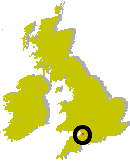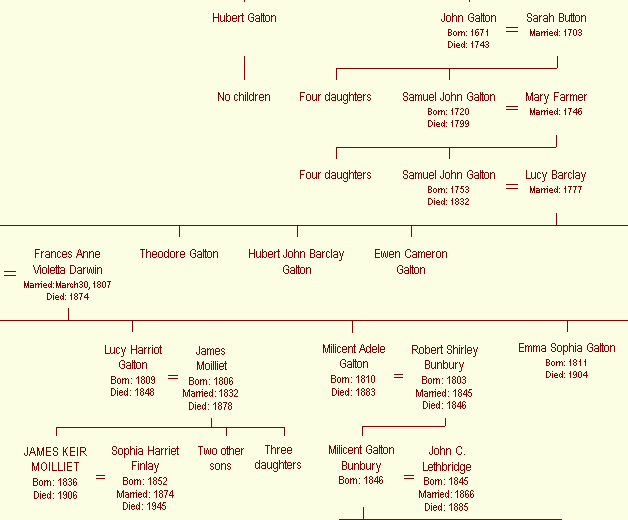In 1806 Mary Anne Galton (1778-1856) the daughter of Samuel John Galton, married Lambert Schimmelpennick, a Dutch tobacco trader. The family knew her as ‘Aunt Skim’. She seems to have gained a reputation in her family for creating discord. Her niece, Elizabeth Anne Galton (Mrs. Edward Wheeler) wrote:
My grandfather had three daughters. The eldest Marianne (Mrs. Schimmelpennick) was very clever and talented, and wrote several clever books, but unfortunately was a great mischief-maker, causing such annoyance and quarrels in the family, and among all their acquaintances from her habit of distorting truth so as to give a false impression, that at last it was settled by her parents and family that all intercourse with her must cease, so that I did not know her.
Her nephew Sir Francis Galton said that:
She was a notorious mischief-maker – ‘she broke off eleven marriages’.
Her memoirs, ‘Life of Mary Anne Schimmelpennick’, were edited and completed after her death by a relation Christiana C. Hankin. Ms. Hankin wrote that the Schimmelpennicks did not want the responsibility of owning the property that Mary Anne had inherited from her grandfather. After much discussion and negotiation the family relented and the matter was settled, but this caused a rift between Mary Anne and the rest of her family.
Mary Anne was very religious and involved in the anti-slavery movement. There is a monument to her in Bristol Cathedral. It seems unlikely that she ever visited Loxton.
Many of the Galton family became clergymen or barristers, and others served in various branches of the armed forces.
Among the most notable is a cousin of Erasmus Galton, Sir Douglas Strutt Galton, K.C.B.(1) (1887), F.R.S.(2), D.C.L.(3), J.P.(4), Late Capt. R.E.(5) He was the son of John Howard Galton of Hadzor House, Worcestershire, and lived at Himbleton, Worcestershire. He was educated at Rugby, and joined the army in 1840 when he was 18 years old. He was the first man in history to use an electric spark as a detonator to explode a charge of gunpowder. After spending his early army life overseas he researched the properties of iron for railway structures, and served as secretary to the Railway Commission. He was a judge of railway appliances at Philadelphia, U.S.A. in 1869, and also at the Paris International Exhibition. Submarine telegraphy was another interest and he became a leading authority on the subject. A member of the Army Sanitary Committee, he gave advice on various topics including London drainage, and the sanitary condition of hospitals in the United Kingdom, and of military hospitals at home and abroad. He was, at various times, Assistant Inspector General of Fortifications, Assistant Under-Secretary War Department, and Director of Public Works. For nearly forty years he was a member of the British Association for the Advancement of Science, and was President from 1895-1896. A leading reformer, he promoted higher education for women. He was an active member for the Society for Aid to the Sick and Wounded in War, an organisation later developing into the Red Cross Society. Sadly, despite all his teachings in antiseptics, he died from blood poisoning in 1899, at the age of seventy-seven, and is buried in Himbleton churchyard. In Worcester there are two memorials to Sir Douglas. There is a stained glass window to his memory in the Cathedral, and in the Judges Lodgings at Shire Hall stands a bust by the famous sculptor Sir Thomas Brock.
Erasmus Galton’s brother, Sir Francis Galton, D.C.L. (Oxford), Hon. Sc.D.(6) (Camb.), F.R.S. (1822-1911) was a distinguished scientist and was the founder of the science of eugenics (heredity ability). He believed that intellectual abilities and other characteristics were inherited. It is quite possible that he was influenced by Charles Darwin, his older and more famous half-cousin. Sir Francis wrote several books on heredity and discovered that each person’s fingerprint is unique, from which the science of identification by fingerprinting was developed. After travelling in Africa he wrote ‘Narrative of an Explorer in Tropical South Africa’ and ‘Art of Travel’. The weather was one of his many interests and he wrote ‘Meteorographica’ the first book to deal with modern methods of mapping the weather.
Notes:
(1) K.C.B.= Knight Commander of the Order of the Bath.
(2) F.R.S.= Fellow of the Royal Society.
(3) D.C.L.= Doctor of Civil Law.
(4) J.P. = Justice of the Peace.
(5) R.E. = Royal Engineers.
(6) Hon.Sc.D.=Honorary Doctor of Science.


